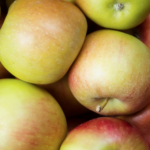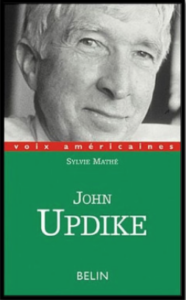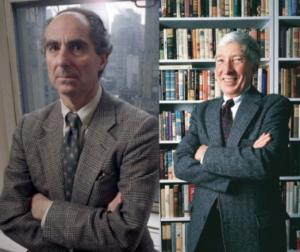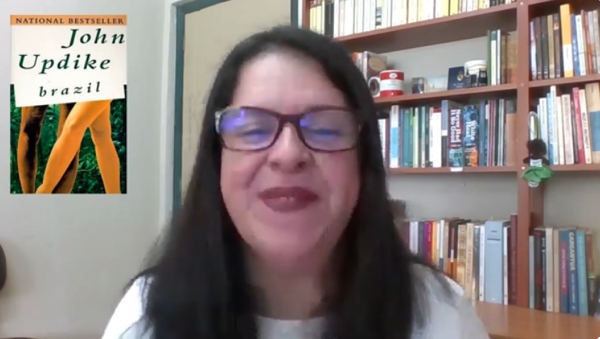 Chase Replogle, pastor of Bent Oak Church in Springfield, Mo., posted a chapter excerpt that didn’t make the final cut of his book, A Sharp Compassion. “I think it still matters, he wrote. “It is taken from the chapter on affirmation and examines how the church has been tempted to avoid what offends.”
Chase Replogle, pastor of Bent Oak Church in Springfield, Mo., posted a chapter excerpt that didn’t make the final cut of his book, A Sharp Compassion. “I think it still matters, he wrote. “It is taken from the chapter on affirmation and examines how the church has been tempted to avoid what offends.”
In comparing Jack Kerouac’s On the Road and John Updike’s Rabbit, Run, which Updike said was written in part as a response to Kerouac’s novel, he notes, “Both novels talk plenty about God. Both raise questions Americans have historically turned to the church to help answer. But Updike alone recognizes the unique temptation the church faces.
“In Updike’s novel, Rabbit genuinely believes that abandoning his family is a kind of spiritual pursuit to find himself. He explains to his pastor, ‘Well I don’t know all this about theology, but I’ll tell you. I do feel, I guess that somewhere behind all this… there’s something that wants me to find it!’ His pastor, Jack Eccles, works tirelessly to reconcile Rabbit with his estranged wife, but Eccles has his own insecurities. He is convinced that his clerical robe and collar rob him of relatability and cost him Rabbit’s genuine respect. He feels he isn’t relevant to Rabbit’s life and interests. His pastoral insecurities lead him to covet Rabbit’s friendship. He imagines that being Rabbit’s friend is an essential prerequisite to leading him back to faith.”
Read the entire excerpt from A Sharp Compassion.

 In
In  Phoenixville (Chester County) Pa.’s Excursion Ciders “uses local apples that are presssed and made in-house, also utilizing other locally-grown ingredients to make their drinks. Currently, the star of the show is Of the Farm: Core. This cider has an ABV of 7.5 percent and is made with apples from Plowville Orchard. Author John Updike spent time there and they named this cider after his novel, Of the Farm.” Here’s the
Phoenixville (Chester County) Pa.’s Excursion Ciders “uses local apples that are presssed and made in-house, also utilizing other locally-grown ingredients to make their drinks. Currently, the star of the show is Of the Farm: Core. This cider has an ABV of 7.5 percent and is made with apples from Plowville Orchard. Author John Updike spent time there and they named this cider after his novel, Of the Farm.” Here’s the  “In the small town of Eastwick, Rhode Island, three women — Alexandra, Jane, and Sukie — discover they have magical powers after their marriages end.
“In the small town of Eastwick, Rhode Island, three women — Alexandra, Jane, and Sukie — discover they have magical powers after their marriages end. RTS, the Serbian public broadcast service, took note of two Serbian scholars of John Updike appearing on a panel at the recent American Literature Association conference in Chicago.
RTS, the Serbian public broadcast service, took note of two Serbian scholars of John Updike appearing on a panel at the recent American Literature Association conference in Chicago. Dojčinović talked about what was covered in the panel on “Revisiting Olinger Stories (1964) at 60 and The Afterlife (1994) at 30: A Roundtable,” while Glintić talked about what it meant for his thesis-in-progress.
Dojčinović talked about what was covered in the panel on “Revisiting Olinger Stories (1964) at 60 and The Afterlife (1994) at 30: A Roundtable,” while Glintić talked about what it meant for his thesis-in-progress. John Updike Society board member Sylvie Mathé was profiled in the series “Persistence of Character — Major interview: Archaeology of a journey” in e-Rea, electronic journal of studies on the English-speaking world. The series, published in French, tracks the breadth of an entire career of distinguished intellectuals, including early influences. An English translation exists in PDF form, but in a file to big to upload and no link to share. Here is the link to a French version online:
John Updike Society board member Sylvie Mathé was profiled in the series “Persistence of Character — Major interview: Archaeology of a journey” in e-Rea, electronic journal of studies on the English-speaking world. The series, published in French, tracks the breadth of an entire career of distinguished intellectuals, including early influences. An English translation exists in PDF form, but in a file to big to upload and no link to share. Here is the link to a French version online:  Mathé talks about the full trajectory of her career, including the experience of spending her senior year in high school in Rock Island, Ill. “Compared to my final year in French, the amount of work was nothing like it was, nor the demands of the homework,” she told the interviewer. She shared that her host family was “extremely puritanical,” with the mother “surprised, even horrified, that I had read texts by Hemingway, or Sanctuary by Faulkner…It must be said that 1968 in a small town in Illinois was still the 50s. It had nothing to do with what was happening on campuses at the same time, with women’s lib, demonstrations against the Vietnam War, for civil rights, etc.” In summary, “Let’s say that compared to my final year in French, or my life in France, which was essentially focused on high school, work and success, it was a much more varied life, more entertaining…I was doing things I had never done before: I was caught up in the rhythm, I went to matches according to the football, basketball, baseball seasons,” and she dated, went to parties where there was drinking and marijuana brownies, and was generally inducted into American culture.
Mathé talks about the full trajectory of her career, including the experience of spending her senior year in high school in Rock Island, Ill. “Compared to my final year in French, the amount of work was nothing like it was, nor the demands of the homework,” she told the interviewer. She shared that her host family was “extremely puritanical,” with the mother “surprised, even horrified, that I had read texts by Hemingway, or Sanctuary by Faulkner…It must be said that 1968 in a small town in Illinois was still the 50s. It had nothing to do with what was happening on campuses at the same time, with women’s lib, demonstrations against the Vietnam War, for civil rights, etc.” In summary, “Let’s say that compared to my final year in French, or my life in France, which was essentially focused on high school, work and success, it was a much more varied life, more entertaining…I was doing things I had never done before: I was caught up in the rhythm, I went to matches according to the football, basketball, baseball seasons,” and she dated, went to parties where there was drinking and marijuana brownies, and was generally inducted into American culture. Mathé’s introduction to John Updike came when she went to Oxford and studied “Puritanism in John Updike’s Fiction” with Jeanne-Marie Santraud, “who was the only Americanist at Paris IV.” She would go on to write her master’s thesis on Updike and compose a monograph for the American Voices series edited by Marc Chénetier titled John Updike: Nostalgia for America.
Mathé’s introduction to John Updike came when she went to Oxford and studied “Puritanism in John Updike’s Fiction” with Jeanne-Marie Santraud, “who was the only Americanist at Paris IV.” She would go on to write her master’s thesis on Updike and compose a monograph for the American Voices series edited by Marc Chénetier titled John Updike: Nostalgia for America. On the American Literature public Facebook group, Milan Milan Stankovic posted a consideration/comparison of two “Great American Writers” whose works offer “profound insights into American society, culture, and individual psychological and individual psychological complexities”: John Updike and Philip Roth.
On the American Literature public Facebook group, Milan Milan Stankovic posted a consideration/comparison of two “Great American Writers” whose works offer “profound insights into American society, culture, and individual psychological and individual psychological complexities”: John Updike and Philip Roth. Edwin Woodruff, who was given a copy of Gertrude and Claudius by a cast member when he directed the play for community theater, wrote in a Patheos column that while he found Updike’s sequel to Shakespeare’s Hamlet “a bit offputting” in the beginning, with a style that “seemed stilted and awkward and the analysis of everyone’s motivations and thoughts rather labored and obvious. But it grew on me as it went on.
Edwin Woodruff, who was given a copy of Gertrude and Claudius by a cast member when he directed the play for community theater, wrote in a Patheos column that while he found Updike’s sequel to Shakespeare’s Hamlet “a bit offputting” in the beginning, with a style that “seemed stilted and awkward and the analysis of everyone’s motivations and thoughts rather labored and obvious. But it grew on me as it went on. Volume 10, Number 2 (Spring 2024) of The John Updike Review was recently published, and Updike society members have been quick to comment on the stunning cover: a photograph of the Tucson casitas that John and Martha Updike owned and lived in each spring between 2004-2008. The photo was taken by the journal’s editor, James Schiff, when attendees at the 7th Biennial John Updike Society Conference in Tucson had the opportunity to tour the casitas.
Volume 10, Number 2 (Spring 2024) of The John Updike Review was recently published, and Updike society members have been quick to comment on the stunning cover: a photograph of the Tucson casitas that John and Martha Updike owned and lived in each spring between 2004-2008. The photo was taken by the journal’s editor, James Schiff, when attendees at the 7th Biennial John Updike Society Conference in Tucson had the opportunity to tour the casitas. Dr. Carla Alexandra Ferreira, a Brazilian scholar whose YouTube channel is “Carla Ferreira: Literary Dialogues,” has featured brief discussions of two John Updike novels:
Dr. Carla Alexandra Ferreira, a Brazilian scholar whose YouTube channel is “Carla Ferreira: Literary Dialogues,” has featured brief discussions of two John Updike novels: